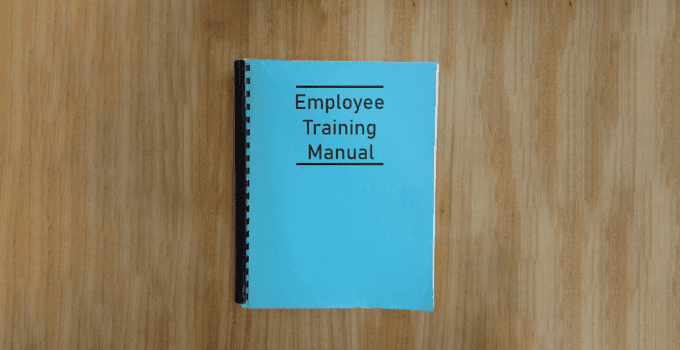Everyone likes being appreciated or recognized for their accomplishments—so how can there be negatives to employee appreciation? Don’t let the phrasing mislead you; it’s more about employee appreciation challenges that, when not addressed correctly, can have negative effects. So what are these challenges, how can you avoid them, and what can you do differently? It isn’t personalized. It’s not easy to keep track of how each employee likes to be recognized, whether subtly in private or in a showy manner in front of their team, but it is extremely important to remember which type of individual you are dealing with.
Did you know that employees who exercise their strengths daily are 8 percent more productive and 6 times more likely to be engaged than those who don’t? Or that work overload can reduce productivity by 68 percent when employees feel they don’t have enough time in the day to complete their tasks? Productivity is the driving force of high performance. However, although it has strong ties with employee engagement, it is in fact its own entity. Focusing on one and ignoring the other will not usually warrant effective results. Let’s look at some employee productivity strategies so your employees’ productivity
Recent studies have found that 76 percent of organizations with over 100 employees rely on assessment tools for external hiring. That number is expected to jump to 88 percent within the next few years. The studies show that assessments are relied upon more heavily for higher seniority roles. Estimates suggest that 72 percent of middle management positions, 80 percent of senior roles, and 59 percent of entry-level positions rely on assessments. So, why bother assessing these upper management candidates? Surely, if a candidate is good at doing a job, they must be good at managing people who do that job,
Training is just as important of a task for managers as it is for employees. Whether you are a brand new manager or one with years of experience, management training is a must. People have a tendency to view it as “How to Be a Manager 101,” and although it does serve that purpose, the much larger purpose of management training is to keep managers operating at peak performance. In fact, there are several negative effects of neglecting to recognize the importance of a routine training process. Some of those negative effects include: Decreased adaptability for both manager and employee
Onboarding is the logical next step after hiring a new employee. That new hire can be the ideal candidate for the job, but if the onboarding process goes south—or doesn’t happen at all—there’s a chance that it’ll have a strongly negative effect on the new employee’s overall fit within the company. Although there are numerous styles and methods to follow that can be more or less effective for your specific organization, there are some universal dos and don’ts that will keep you on the right path, regardless of the style you choose to follow. Take a look at them below
The hiring process consists of more than just an interview and a handshake. There are behind the scenes steps that take place long before you’re face-to-face with a candidate, as well as after the interview. This isn’t exactly new information, but it makes for a good reminder. The issue is, most hiring departments focus too much on one stage of the process and end up neglecting other stages. They could be so distracted by preparing for the interview that they lack effort when it comes to recruiting. Or maybe they spent all their time on screening and neglected to set
Organizations’ efforts to ensure job compatibility are growing in popularity by the day. But some organizations still have some reservations about donating the time and resources necessary to make it happen. It turns out, not only does the employee benefit from correct job matching, the organization does, too. Here are some reasons from both employee and organization perspectives that just might convince you to take that leap into job compatibility efforts if you haven’t already—or continue these efforts if you have started already. From a business perspective, there are 4 major positive effects of job compatibility. From an employee perspective,
If you read our other blog from this week, then you’ve heard the news: millennials are really no different than other generations. They are likely to respond to the common appreciation methods, with only minor tweaks. Remember these 3 main points: recognize, personalize, and provide. Let’s look at some details of each: Recognize… Behaviors and results Company values In real-time And coach simultaneously Visibly and widely Personalize… The learning experience The timing of recognition Rewards and incentives Provide… Feedback Appreciation A sense of purpose Collaboration encouragement Tech solutions Other than the decade of their birthday, millennials aren’t all that different
What are some of the most common things you hear about millennials? Most people that have been in the workforce for several years claim to hear some of the following pretty often: Millennials are disloyal Millennials won’t work long hours Millennials have a sense of entitlement Millennials are narcissistic Every generation has some cons to go with the pros, but it seems millennials are often targets for performance and work ethic complaints. Mobile platform CEO Christian Brucculeri reminds us that millennials are truly no different than any other generation—every generation has undesirable employees. The cofounder and co-CEO of digital marketing
Over $10,000 each year is wasted on poor employee onboarding. Luckily, experts from several successful organizations have shared employee onboarding methods that yield results instead of wasted funds. Take a look at some of these methods that will help your HR team onboard—and spend—wisely. Make the first day memorable Keep a reasonably structured schedule in the early days Form a cross-departmental onboarding team Set expectations early and often Allow new hires to give feedback Don’t be afraid to assign new hires to large projects TalentWise tells us that 91 percent of employees stick around for at least one year when








